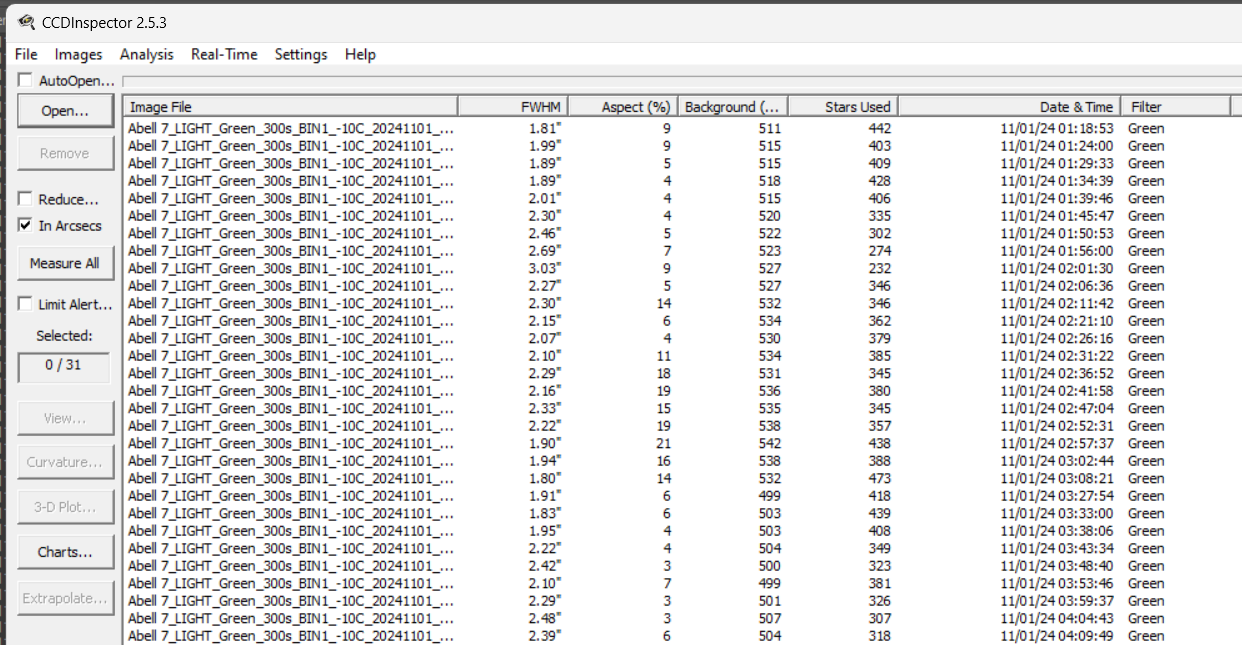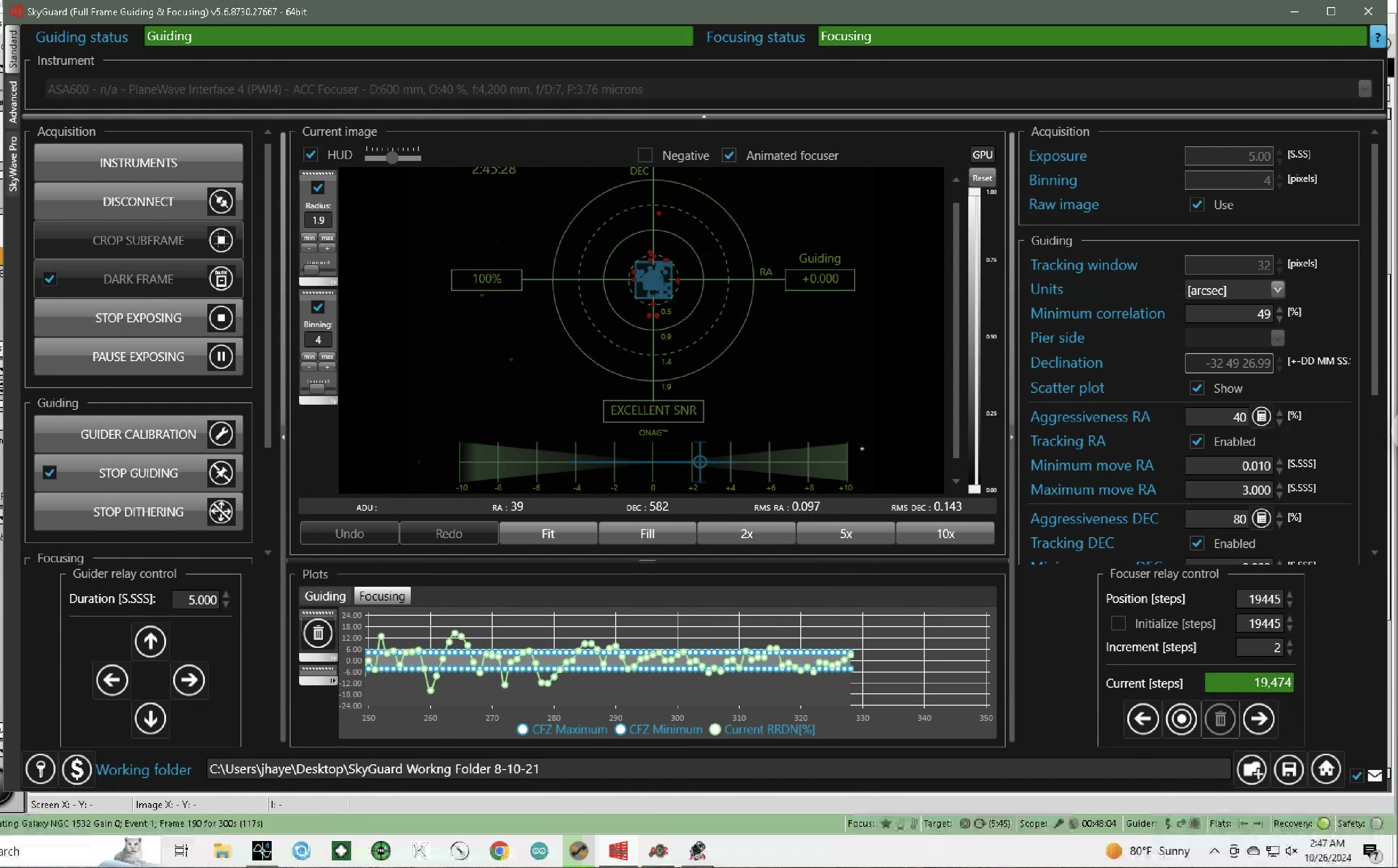I've seen some choose to trigger a re-focus based on an increase in FWHM or HFD. This never made sense to me because I want to refocus before focus has shifted outside the CFZ rather than after. By definition, if you can see the effect of being out of focus it is too late. Worse yet, I think there is some assumption that seeing is constant. It is not.
Below is a good example of how seeing can change over a short period of time. This is CDK17 data from Obstech and at these seeing levels the CDK is pretty much a seeing monitor (if in focus). Within one hour the FHWM moved up and back down over 1". Looking at the background values (mode of the image) it looks to me like there were some thin high clouds passing. But later, after the background values stabilize, the FWHM is still varying by over 0.5".
The answer is to focus on temperature change. Expansion and contraction of the OTA, etc. is the cause of focus shift and it is measurable in real time. Different scopes can have vastly different rates of expansion and contraction and different critical focus zone (CFZ) widths. So you need to at least roughly calibrate your system to fine tune how much temp change can move your system out of the CFZ. I did this by plotting the different focus results I saw at different temps. I settled on a change of 2 degrees C for the CDK17, 1 degree for the DeltaRho and 0.5 degrees for the FSQ.

Below is a good example of how seeing can change over a short period of time. This is CDK17 data from Obstech and at these seeing levels the CDK is pretty much a seeing monitor (if in focus). Within one hour the FHWM moved up and back down over 1". Looking at the background values (mode of the image) it looks to me like there were some thin high clouds passing. But later, after the background values stabilize, the FWHM is still varying by over 0.5".
The answer is to focus on temperature change. Expansion and contraction of the OTA, etc. is the cause of focus shift and it is measurable in real time. Different scopes can have vastly different rates of expansion and contraction and different critical focus zone (CFZ) widths. So you need to at least roughly calibrate your system to fine tune how much temp change can move your system out of the CFZ. I did this by plotting the different focus results I saw at different temps. I settled on a change of 2 degrees C for the CDK17, 1 degree for the DeltaRho and 0.5 degrees for the FSQ.


